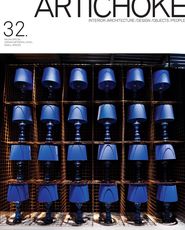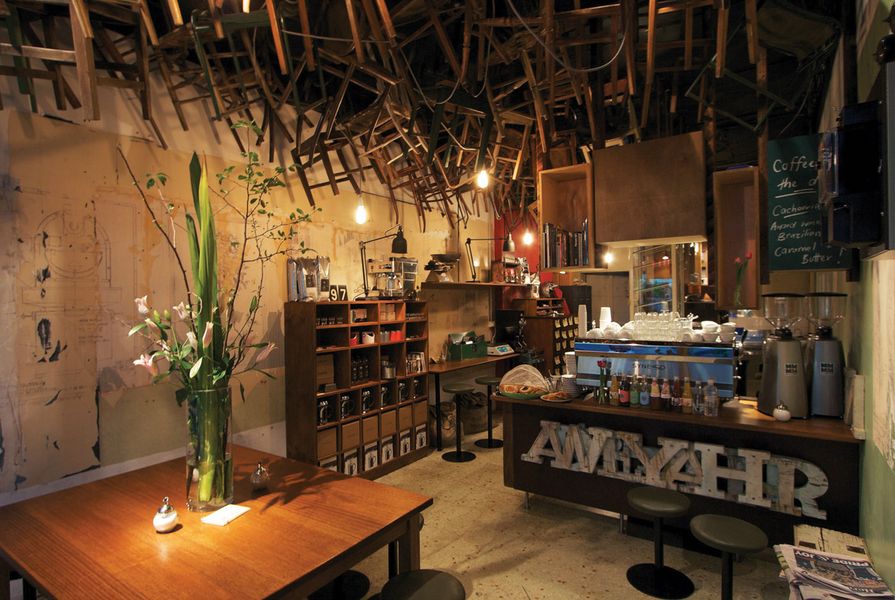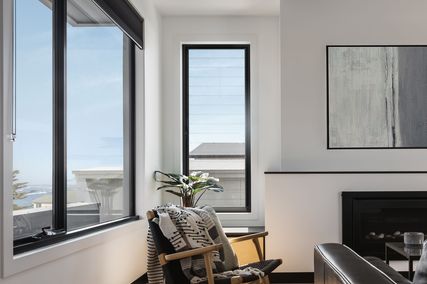In the 1958 text The Poetics of Space1, the seminal French phenomenologist Gaston Bachelard transformed ordinary domestic elements into the extraordinary: corners, cupboards and small rooms become receptacles of our inner life, hopes and dreams. Bachelard’s imaginative world is miniature, inward and filled with nooks and crannies - his corners are sited in deep, intimate interior space. These interiors rely on a “dialectics of outside and inside,” presuming a relatively clear division between the two spatial categories as formed by walls, corners and ceilings.
In practical terms, small contemporary hospitality and retail spaces are perfect tools for examining and questioning preconceived notions of inside and outside, turning outside in or inside out. Many cafes and shops extract spatial quality and life from their immediate street context, blurring the physical and conceptual divisions between interior and exterior through operable windows and doors. However, the “inside-outsideness” of the following projects also stems from a blurring of the boundaries that constitute each interior.
Interior space can be maximized by creating a connection between different wall and ceiling conditions - boundaries are blurred by wrapping a new surface across two intersecting planes. The Sideplate Cafe in Sydney by Tribe Studio is located within a small site, an example of the hole-in-the-wall cafe typology. The main spatial device in this cafe is the timber ceiling surface that folds or wraps down the side wall, both defining the patron seating area (at right angles to the street) and concealing storage and lighting. This simple connecting device also links patron seating areas with cafe preparation areas, enclosing what Tribe Studio describes on its website as “a great sense of activity in this very thin space.”
Liminal air-descend 2007-2009 by Korean artist Shinji Ohmaki at APT6, Gallery of Modern Art, Queensland.
Image: Queensland Art Gallery
Espresso Garage in Brisbane by Arkhefield Architects also uses wrapping techniques which in this case accentuate a corner site condition at the intersection of two inner-city streets. Although purpose built, the Espresso Garage is a small fitout of an external corner of an existing office building. This project is all corners -but unlike Bachelard’s introverted corners, these corners extend and amplify connections to the urban context. The servery counter is inside a small lockable area, a purpose-built concrete structure with a partially cantilevered roof. At night, this structure appears like a storage cabinet underneath the foyer canopy servicing the building proper. Espresso Garage has another upscaled interior element, an external curtain that can be drawn across the seating area. Although suggestive of a domestic interior, the curtain is unable to completely protect its inhabitants from the gaze of passing traffic, further complicating its purpose.
While ceilings normally define the vertical extent of an interior, additional ceiling surfaces can also conceal the line of the ceiling proper, thus adding complexity to actual and perceived interior limits. One way of doing this is by covering the ceiling with hanging elements - nylon thread, coconut-husk string, chairs. Liminal air-descend 2007-2009 by Korean artist Shinji Ohmaki is an install-ation of fibres hung from the ceiling, part of the recent APT6 exhibition at Brisbane’s Gallery of Modern Art. The audience moves around this sensual space, with bodies carving out pathways through the nylon forest. Similar ceiling techniques have been employed in commercial interiors, with fibres suspended from an overhead grid. The ceiling of the Aesop store in Singapore by March Studio (Artichoke 31, page 82) is constructed of the same coconut-husk twine that is used to wrap Aesop gift boxes. Likewise, in the newly opened Boa Hairdressers salon, Zurich, designer Claudia Meier has created a hairy ceiling of translucent fibres that acts as the primary light source over the salon workstations. The combination of soft, filtered light and varying ceiling height and texture creates a glowing, infinite interior sky.
Brother Baba Budan cafe in Melbourne.
Image: Brother Baba Budan
Brother Baba Budan on Little Bourke Street lacks the luminosity of the previous examples yet nevertheless confounds the logic of the ground plane and ceiling. Inside the Melbourne cafe, old chairs defy gravity through being transformed into an undulating ceiling surface. Bachelard spoke of a philosopher “condemned by his peers to live on the ground floor.” At Brother Baba Budan, we can at least inspire to inhabit the ceiling.
Design Practices: Tribe Studio, Arkhefield, March Studio, Claudia Meier, Brother Baba Budan
1. Gaston Bachelard, The Poetics of Space, Maria Jolas (trans) (Boston: Beacon Press, 1994) 211. / 2 Ibid., 147.
Source

Discussion
Published online: 1 Sep 2010
Words:
Cathy Smith
Images:
Brother Baba Budan,
Queensland Art Gallery,
Scott Burrows
Issue
Artichoke, September 2010




















